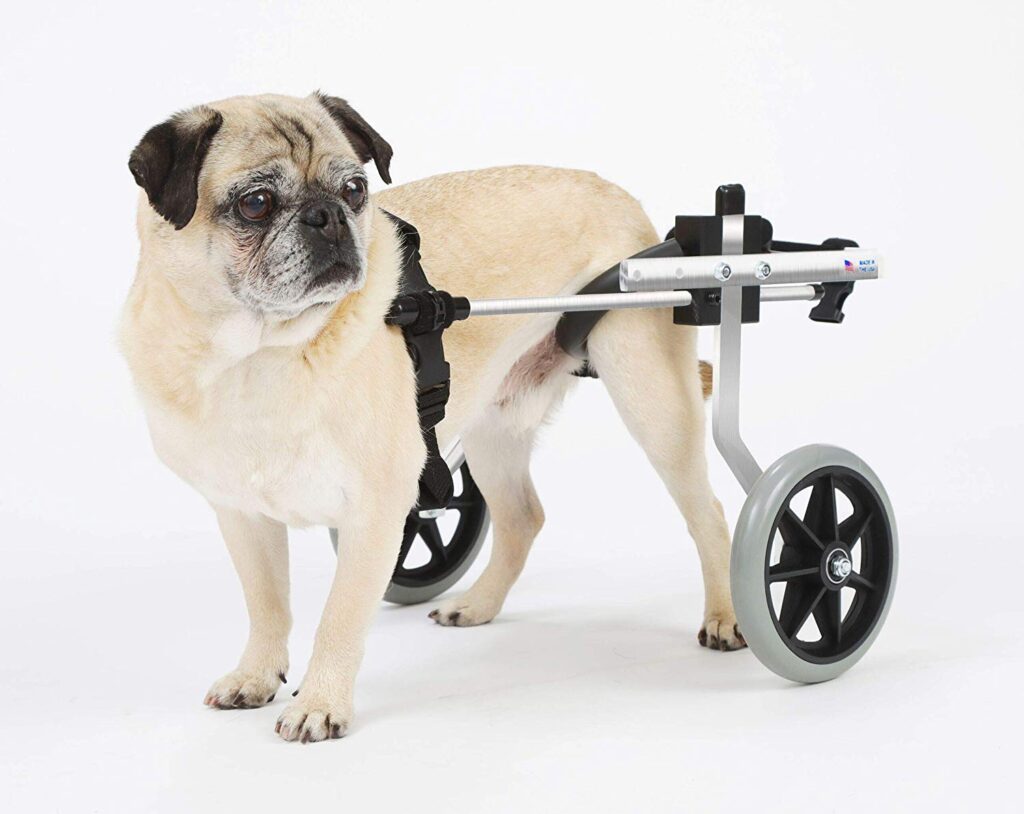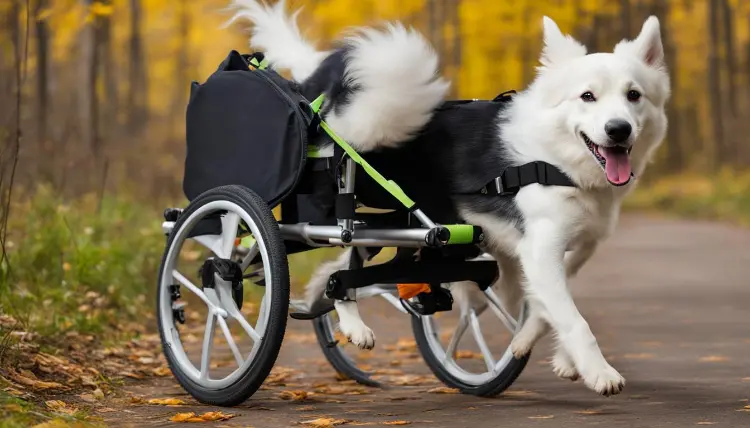A dog wheelchair can be a game-changer for pets with mobility issues, providing them with the freedom to move and enjoy life despite physical limitations. Whether due to age, injury, or congenital conditions, many dogs face challenges that can be mitigated with the use of a dog wheelchair. This guide will delve into the various aspects of dog wheelchairs, from their benefits to selecting the right one, and how to help your dog adapt to this new mode of movement.
Understanding the Need for a Dog Wheelchair
Dogs, like humans, can suffer from various mobility issues due to injury, aging, or illness. Conditions such as arthritis, hip dysplasia, spinal cord injuries, or neurological disorders can severely impact a dog’s ability to walk or run. A dog wheelchair is specifically designed to support the dog’s hind legs or full body, allowing them to move around with ease and continue enjoying their daily activities.
It is not just a tool for movement but also a vital piece of equipment that can enhance the quality of life for pets. It allows dogs to regain their independence, reduce pain, and even participate in exercises that keep them healthy and happy.

Types of Dog Wheelchairs
It’s important to understand the different types available, as each is tailored to address specific needs:
Rear Support Wheelchairs
Rear support wheelchairs are the most common type of dog wheelchair. They are designed for dogs that have weak or paralyzed hind legs but strong front legs. These wheelchairs lift the dog’s rear off the ground, allowing the front legs to do all the work while the wheels in the back provide balance and mobility.
Full Support (Quad) Wheelchairs
Full support, or quad wheelchairs, are designed for dogs that have mobility issues in all four legs. These wheelchairs provide support to both the front and rear of the dog’s body, ensuring that they can move without putting any strain on their legs. This type of dog wheelchair is ideal for pets with severe neurological issues or conditions that affect the entire body.
Front Support Wheelchairs
Although less common, front support wheelchairs are available for dogs with strong hind legs but weak or injured front legs. These wheelchairs support the front of the dog’s body, allowing the back legs to propel them forward.
Selecting the Right Dog Wheelchair
Choosing the right dog wheelchair is crucial for your pet’s comfort and mobility. Here are some key factors to consider:
Size and Weight
The size and weight of your dog will significantly influence the type of wheelchair you choose. Most manufacturers provide sizing charts to help you select the appropriate model. Measure your dog carefully, taking into account their height, length, and weight, to ensure a good fit.
Adjustability
It should be adjustable to accommodate your pet’s specific needs. Look for models that offer adjustable straps, harnesses, and wheels. This flexibility ensures that the wheelchair can be customized to fit your dog’s body perfectly, providing maximum comfort and ease of movement.
Durability
The durability of the dog wheelchair is another important consideration. The frame should be made from high-quality materials, such as aluminum or stainless steel, which can withstand daily use and various terrains. Durable wheels are also essential, especially if your dog enjoys outdoor activities.
Ease of Use
The ease of assembling and adjusting the dog wheelchair is crucial, especially if you’re new to using such devices. Choose a model that comes with clear instructions and requires minimal effort to put together. This will save you time and ensure your dog gets the mobility assistance they need without delay.
Helping Your Dog Adjust to a Dog Wheelchair
Introducing your dog to a dog wheelchair may require some patience and training. Here are some tips to help your dog adapt:
Start Slowly
Introduce the dog wheelchair gradually. Allow your dog to sniff and explore the wheelchair before attempting to place them in it. Use treats and positive reinforcement to create a positive association with the device.
Short Sessions
Begin with short sessions, allowing your dog to get used to the feel of the wheelchair. Start indoors on a flat surface where your dog feels safe. Gradually increase the duration of these sessions as your dog becomes more comfortable.
Encouragement and Positive Reinforcement
Encourage your dog to move by using treats or toys as motivation. Praise them when they make progress, no matter how small. Positive reinforcement will help your dog feel more confident and willing to use the wheelchair.
Monitor for Comfort
Watch for any signs of discomfort or difficulty. Adjust the straps, harness, and wheels as needed to ensure a snug but comfortable fit. If your dog shows signs of distress or pain, consult with your veterinarian to make sure the wheelchair is properly fitted and that there are no underlying health concerns.
The Benefits of Using a Dog Wheelchair
The use of a dog wheelchair offers numerous benefits for both the dog and their owner:
Improved Quality of Life
A dog wheelchair allows your pet to regain their mobility, which significantly improves their quality of life. They can enjoy walks, play, and explore their surroundings, just like they used to before their mobility was compromised.
Pain Relief
For dogs with conditions like arthritis or hip dysplasia, a dog wheelchair can alleviate pain by reducing the weight and pressure on the affected joints. This relief allows them to move more freely without discomfort.
Mental Well-being
Maintaining physical activity is important for a dog’s mental well-being. The ability to move and engage with their environment helps prevent depression and anxiety that can arise from being immobile.
Extended Life Expectancy
With the help of a dog wheelchair, many pets can live longer, healthier lives. The wheelchair enables them to continue exercising, maintaining muscle mass and cardiovascular health, which can contribute to a longer lifespan.
When to Consult a Veterinarian
While dog wheelchairs can be incredibly beneficial, it’s important to consult with your veterinarian before making a decision. A vet can assess your dog’s specific condition and recommend whether a wheelchair is the right choice. They can also provide guidance on the best type of wheelchair for your dog’s needs and how to properly fit and use it.
In some cases, a dog wheelchair may be a temporary solution while your pet recovers from an injury. In other cases, it may be a permanent aid for dogs with chronic conditions. Your veterinarian’s advice will be crucial in making the best decision for your pet’s health and well-being.

Conclusion
A dog wheelchair is more than just a mobility aid; it’s a lifeline for dogs facing mobility challenges. By choosing the right wheelchair, helping your dog adapt, and consulting with a veterinarian, you can ensure that your pet enjoys a happy, active life despite their physical limitations. Whether it’s a rear support, full support, or front support wheelchair, the right choice can make a world of difference for your dog’s comfort and well-being.
Also read: Small Dog Breeds: Perfect Companions for Every Lifestyle





